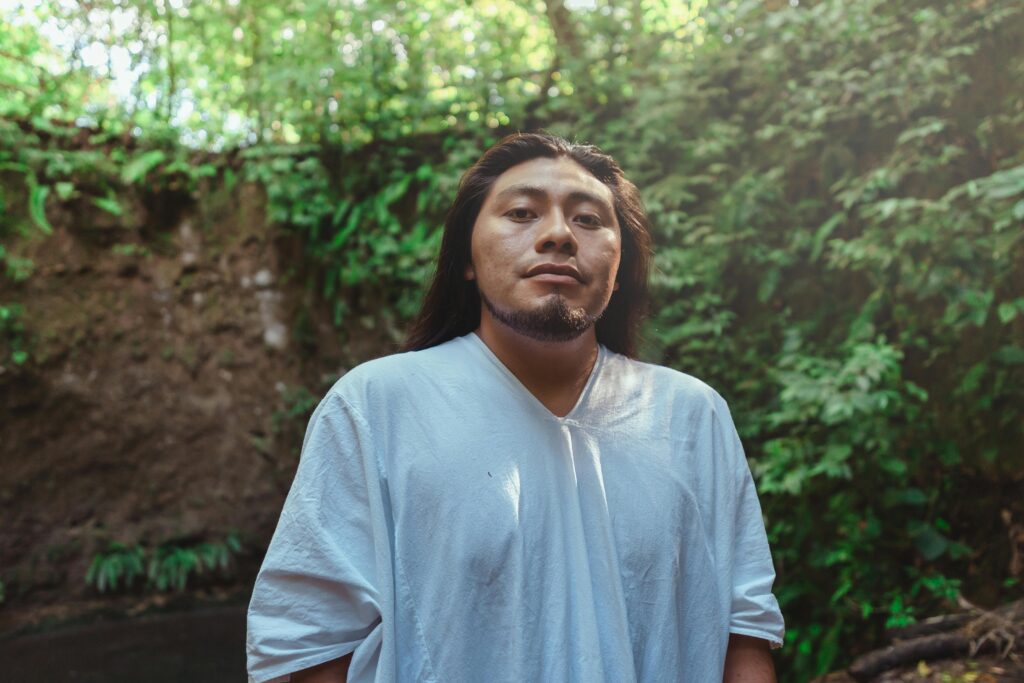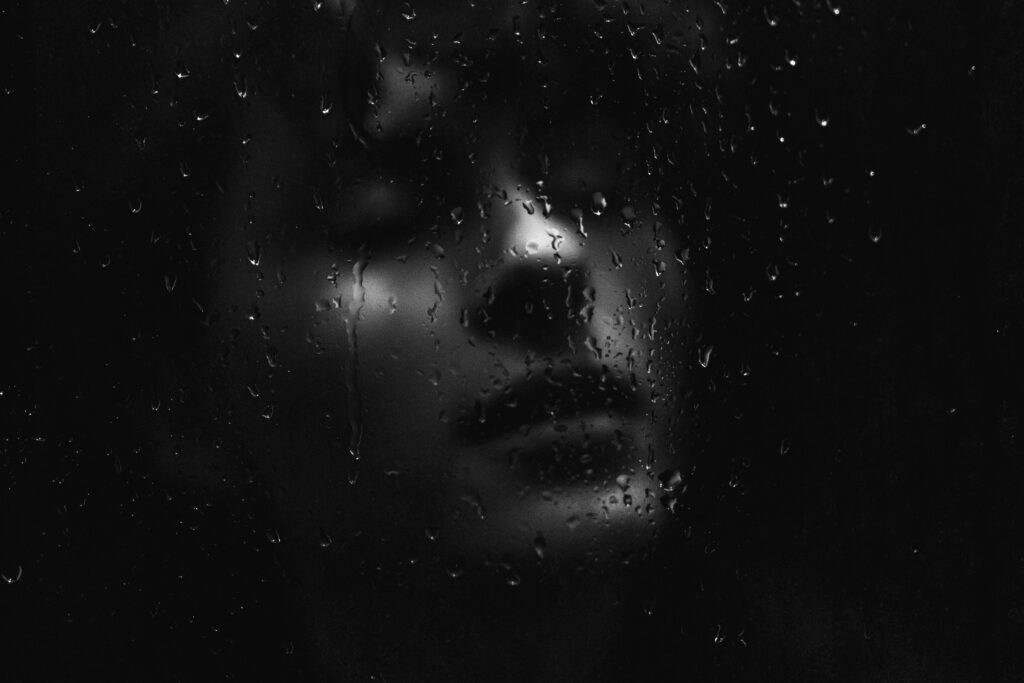Throughout history, different cultures have turned to plants for healing, spiritual growth, and connection to the divine. Two of the most famous sacred plants are Peyote and Ayahuasca. Although peyote and ayahuasca are often used in the same way, as a medicinal and hallucinogenic agent for deep, often life-changing experiences, they are very different in origin and effect. This article explores what makes each plant unique and will help you decide on peyote vs. ayahuasca.
Let’s start with peyote.
What is Peyote?
Peyote is a small, spineless cactus that grows mainly in parts of Mexico and the southern United States. It has been used for thousands of years by Indigenous peoples, especially by Native American tribes such as the Huichol and the Navajo.
When the Europeans came over from the new world, peyote was widely used across North America. However, as part of the conversion to get people to believe in Christianity, peyote was looked down upon. This is because people on peyote would report having godly encounters with spirits. And so it became less popular among North Americans for many years. Though, given the popularity of ayahusascua, peyote is also a medicine more people want to know about.
The active ingredient in Peyote is mescaline, a natural psychedelic compound. Mescaline affects how you perceive the world. It often causes vivid visions, deep emotions and insights. You may also experience a strong sense of connection to everything around you. The chemical makeup of mescaline is similar to other hallucinogenic substances like LSD and psilocybin. Peyote produces a hallucinogenic effect, which is the result of a natural defence system created by the cactus.
In traditional ceremonies, Peyote is regarded as a sacred teacher. It’s commonly used for:
- Spiritual guidance
- Healing emotional pain
- Building community bonds
- Connecting with nature and ancestors
A traditional peyote ceremonies is long and typically lasts through the night. It includes singing, drumming, prayer. A proper peyote ceremony is led by experienced spiritual leaders called “roadmen.”
How is Peyote taken?
Peyote is usually prepared by carefully removing its small, round tops, known as “buttons”. Peyote buttons are rich in mescaline, the plant’s psychoactive heart.
These buttons may be dried and chewed, though their bitter taste can be intense. It can also be steeped in water to create a peyote tea. You can use this method if you want a gradual psychedelic effect. The dried buttons can also be ground into a powder. And often the powder is smoked or blended with tobacco or cannabis for a quicker, though often shorter, journey. Others choose to place the powder into capsules, sidestepping the bitterness altogether.
A more modern approach is to extract mescaline from the peyote cactus and form it into liquid or tablet. In labs, scientists have even learned how to create mescaline synthetically, mimicking the sacred compound found in nature.
How does Peyote work on the brain and body?
The substance targets the brain by increasing your levels of serotonin and dopamine, which are chemicals responsible for mood, emotions, and happiness. When there’s a lot of these chemicals in your brain, you may start to experience powerful psychedelic effects such as vivid hallucinations, where your senses seem to blend together. For example, people often say they can “see music” or “hear colors.” Time might feel like it’s speeding up or slowing down, and your surroundings may look brighter or more intense. Everyday things can appear magical or deeply meaningful.
Emotionally, the experience can be intense. Some people feel deep joy, love, or peace. You might also have an experience where you face fear, sadness, or anxiety. In some cases, people may go through what’s called a “bad trip”, which feels scary or overwhelming.
The body also reacts to peyote with physical effects that include:
- Numbness or muscle tension
- Increased heart rate
- Raised blood pressure
- Nausea and vomiting
- Sweating or chills
- Changes in body temperature
These effects are usually temporary but can feel intense during the experience.
For many Indigenous cultures in the Americas, peyote is more than a psychedelic. It’s considered a sacred medicine. It has been used in traditional healing for generations, believed to help with conditions like:
- Pain (e.g., toothaches)
- Fever
- Diabetes
- Spiritual imbalances
It’s respected not just for its mind-altering effects but also for its role in physical and spiritual healing.
Now that you understand peyote, let’s compare it to ayahuasca so you can decide peyote vs. ayahusaca—what’s better for you?
What is Ayahuasca?
Ayahuasca is a powerful brew made from two plants: the Banisteriopsis caapi vine and the Psychotria viridis leaf, native to the Amazon rainforest. Indigenous tribes of South America, especially in Peru, Brazil, and Colombia, have used Ayahuasca for thousands of years.
The brew contains DMT (dimethyltryptamine), a very strong psychedelic. It also contains MAO inhibitors from the vine that allow DMT to be active when drunk.
On Ayahuasca you may experience:
- Deep visions and symbolic journeys
- Emotional release (often crying or vomiting, known as “purging”)
- Insights into personal problems, past traumas, or spiritual questions
- A feeling of being connected to a Higher Power or the spirit world
Ceremonies should be guided by a shaman or team trained in delivering ayahuasca. Traditionally, a shaman may sing special healing songs called icaros to guide the experience.
How is Ayahuasca taken?
Ayahuasca is brewed and taken as a drink. It is a concoction of two plants boiled togeter for several hours or even days by an experienced shaman (also called an ayahuasquero).
- Banisteriopsis caapi (a vine): Contains MAO inhibitors (harmala alkaloids) that allow DMT to be orally active.
- Psychotria viridis or Diplopterys cabrerana: Leaves from these plants contain DMT (a powerful psychedelic compound).
Ayahuasca is usually taken during a ritual guided by a shaman or trained facilitator who oversees the ceremony. These ceremonies are typically conducted at night, in dark or dimly lit spaces. This helps participants focus inward and enhances the introspective nature of the experience.
Participants usually sit or lie on mats, arranged in a circle or around the perimeter of the space. They are often given buckets in anticipation of vomiting, a common effect known as “la purga.” La purga is considered a vital part of the physical and spiritual cleansing process.
The ayahuasca brew is served in small cups and consumed in one or more doses throughout the night. It has an extremely bitter taste. The psychoactive effects typically begin within 20 to 60 minutes of ingestion and can last anywhere from 4 to 6 hours, though some residual effects may linger longer depending on the individual and the dosage.
How does Ayahuasaca work on the brain and body?
One of the most critical actions of ayahuasca is the activation of DMT. DMT is a naturally occurring psychedelic compound found in the human brain and many plant species. Normally, when DMT is consumed orally, it is broken down by enzymes in the digestive system. However, since ayahuasca contains two plants, the Banisteriopsis caapi aspect of the brew has harmala alkaloids that inhibit MAO activity in the brain. This temporary inhibition allows DMT to be absorbed into the bloodstream and reach the brain where it exerts its profound psychoactive effects.
Ayahuasca alters brain connectivity in notable ways. Neuroimaging studies have shown that the brew increases communication between brain regions that don’t typically interact. One major area affected is the default mode network (DMN), which is involved in self-reflection, ego identity, and the sense of self. Under the influence of ayahuasca, the DMN becomes “quieted,” leading to experiences of ego-dissolution and a deep sense of unity or interconnectedness. At the same time, increased communication between the visual cortex and the limbic system heightens both visual imagery and emotional intensity.
Another significant effect is on neuroplasticity and healing. Research suggests that ayahuasca may stimulate neurogenesis and enhance neural plasticity, particularly in the prefrontal cortex, which governs decision-making and emotional regulation. This may explain why many users report lasting improvements in mood, reduced anxiety, and breakthroughs in processing trauma after participating in ceremonies.
Ayahuasca also profoundly influences perception, memory, and consciousness. You might have vivid visions, life reviews, emotional catharsis, and encounters with spiritual entities or archetypal figures. These experiences are often seen as transformative and healing. DMT’s strong binding to serotonin receptors — particularly the 5-HT2A receptor — is believed to be the mechanism behind these hallucinogenic and altered-state effects.
On a physical level, ayahuasca is well-known for inducing nausea, vomiting, diarrhea, shaking, and sweating. Indigenous cultures believe this purge expels physical toxins and emotional or spiritual blockages. From a scientific perspective, it’s seen as a physiological response to the plant alkaloids and possibly a release of somatic tension tied to emotional trauma.
Ayahuasca also appears to impact the hormonal and immune systems. Some studies suggest it can modulate cortisol levels (the body’s primary stress hormone) and influence immune function. These effects could underlie its reported benefits in helping manage conditions such as chronic stress, depression, and PTSD.
Now that you know more about ayahuasca, let’s look at a side-by-side comparsion of peyoter vs. ayahuasca that shows how they differ in many ways.
Key Differences Between Peyote and Ayahuasca
| Aspect | Peyote | Ayahuasca |
| Origin | North America (Mexico, U.S.) | South America (Amazon rainforest) |
| Main Ingredient | Mescaline | DMT (with MAO inhibitors) |
| Form | Cactus (eaten fresh, dried, or in tea) | Brewed drink (thick, earthy tea) |
| Typical Effects | Long, gradual experience; feelings of love, unity, visions often tied to nature | Intense visions; deep emotional and spiritual healing; strong purging |
| Ceremony Style | Prayer, drumming, singing with group focus | Icaros (healing songs), focused on individual internal journey |
| Physical Side Effects | Nausea, vomiting, dizziness | Strong nausea, vomiting (“purging”), diarrhea |
| Duration | 8–12 hours | 4–6 hours per ceremony (but often repeated over multiple nights) |
Similarities Between Peyote and Ayahuasca
Even though they come from different parts of the world and use different plants, Peyote and Ayahuasca have a lot in common:
- Spiritual wakening: Both are used to awaken deeper parts of the self and bring about spiritual growth.
- Healing: Many people seek these medicines to heal trauma, emotional wounds, or find purpose.
- Guidance required: Both are traditionally used in ceremonies led by experienced guides to help protect and support participants.
- Challenging but rewarding: Neither experience is easy. Participants often face deep fears, sadness, and pain before they reach clarity and peace.
Which One is “Better”?
After an examining of peyote vs. ayahuasca, you might be wondering, which is a better plant medicine? There is no “better” plant medicine. It depends on the person, their intention, and their connection to the tradition.
- Peyote tends to offer a slower, more grounded journey, often with strong feelings of peace and connection to nature.
- Ayahuasca often brings a more intense, emotional, and visionary experience, helping people dive deep into their subconscious mind.
Both medicines should be approached with respect, preparation, and support from trusted and trained leaders. You should also not take either of these substances without a trained guide and without researching and understanding potential risks.
Both ayahuasca and peyote are revered in Indigenous traditions for their spiritual and healing properties, but they each come with significant risks that must be acknowledged. For individuals with psychiatric conditions such as schizophrenia or bipolar disorder, both substances can trigger or worsen symptoms. The intense psychological effects — ranging from vivid visions to ego-dissolution — can become overwhelming, especially without proper preparation or support. Ayahuasca’s DMT and peyote’s mescaline both deeply affect mood, cognition, and perception, with potential for anxiety, paranoia, or panic attacks if the experience becomes too intense or disorienting.
From a physical standpoint, both substances place notable stress on the body. Ayahuasca and peyote commonly induce nausea, vomiting, and diarrhea, which are considered part of a cleansing ritual in traditional settings but may be unpleasant or even risky for some. Each can elevate heart rate and blood pressure, posing dangers for people with cardiovascular issues. Peyote’s effects may persist for up to 12 hours, often leading to insomnia, dehydration, and fatigue, while ayahuasca’s impact can linger for several hours as well, occasionally accompanied by tremors or sweating.
Another serious concern with ayahuasca lies in drug interactions, especially with antidepressants like SSRIs or other medications that affect serotonin levels. Such combinations can result in serotonin syndrome, a potentially life-threatening condition. While peyote carries fewer known pharmacological interactions, it still demands caution, particularly when used outside of traditional ceremonial frameworks or in combination with other substances.
Ultimately, while both ayahuasca and peyote have potential to foster deep healing and spiritual insight, they are not suitable for everyone. Their use requires careful screening, a supportive setting, and cultural respect. Whether in a traditional ceremony or modern therapeutic context, these plant medicines should be approached with reverence, intention, and informed guidance to ensure safety and meaningful integration.



